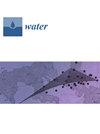Application of GIS Spatial Analysis for the Assessment of Storm Surge Inundation Risks in the Guangdong–Macao–Hong Kong Great Bay Area
IF 3
3区 环境科学与生态学
Q2 ENVIRONMENTAL SCIENCES
引用次数: 0
Abstract
This study evaluates the storm surge inundation risk in three anthropogenically infilled estuaries—Xichong, Renshan, and Kaozhouyang—located in the Guangdong–Macao–Hong Kong Great Bay Area, China. By integrating GIS spatial analysis with storm surge modeling, we conducted 204 numerical experiments to simulate storm surge inundation under varying typhoon intensities and astronomical tide conditions. Results revealed that coastal terrain plays a crucial role in influencing storm surge levels and inundation extents. Specifically, the pocket-shaped terrain in the Renshan and Kaozhouyang estuaries amplified storm surges, resulting in higher inundation levels compared to the relatively open terrain of Xichong. Furthermore, anthropogenically reclaimed land in these estuaries appear to be particularly vulnerable to storm-induced inundation. Overall, this study underscores the importance of considering coastline morphology and the anthropogenic modifications of coastal terrain in storm surge risk assessments, offering valuable insights for disaster prevention and mitigation strategies. The use of ArcGIS spatial analysis coupled with storm surge modeling, facilitated by high-resolution DEMs, provides a statistical risk assessment of inundation. However, more complex flooding dynamics models need to be developed, particularly when terrestrial bottom friction information, which is heavily modified by human activities, can be accurately incorporated.应用 GIS 空间分析评估粤港澳大湾区风暴潮淹没风险
本研究评估了位于中国粤港澳大湾区的西冲、仁山和高洲洋三个人为填海河口的风暴潮淹没风险。通过将 GIS 空间分析与风暴潮建模相结合,我们进行了 204 次数值试验,模拟不同台风强度和天文潮汐条件下的风暴潮淹没情况。结果表明,沿岸地形对风暴潮水平和淹没范围有重要影响。具体而言,与西充相对开阔的地形相比,仁山口和高洲洋河口的袋状地形放大了风暴潮,导致更高的淹没水平。此外,这些河口人为开垦的土地似乎特别容易受到风暴引起的淹没。总之,这项研究强调了在风暴潮风险评估中考虑海岸线形态和沿海地形人为改变的重要性,为防灾减灾战略提供了宝贵的启示。在高分辨率 DEM 的帮助下,使用 ArcGIS 空间分析与风暴潮模型相结合,可以对淹没进行统计风险评估。不过,还需要开发更复杂的洪水动态模型,特别是在能够准确纳入受人类活动严重影响的陆地底部摩擦力信息时。
本文章由计算机程序翻译,如有差异,请以英文原文为准。
求助全文
约1分钟内获得全文
求助全文
来源期刊

Water
WATER RESOURCES-
CiteScore
5.80
自引率
14.70%
发文量
3491
审稿时长
19.85 days
期刊介绍:
Water (ISSN 2073-4441) is an international and cross-disciplinary scholarly journal covering all aspects of water including water science and technology, and the hydrology, ecology and management of water resources. It publishes regular research papers, critical reviews and short communications, and there is no restriction on the length of the papers. Our aim is to encourage scientists to publish their experimental and theoretical research in as much detail as possible. Full experimental and/or methodical details must be provided for research articles. Computed data or files regarding the full details of the experimental procedure, if unable to be published in a normal way, can be deposited as supplementary material.
 求助内容:
求助内容: 应助结果提醒方式:
应助结果提醒方式:


